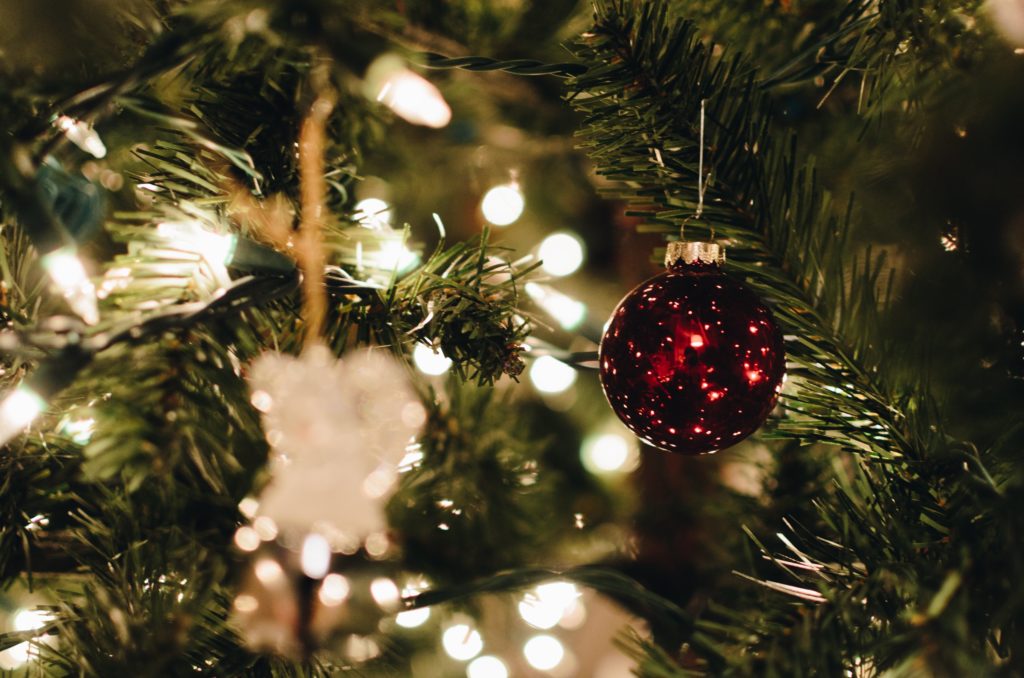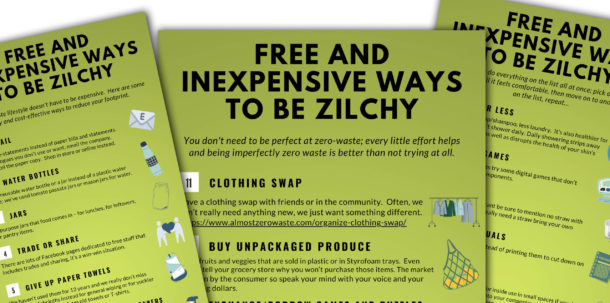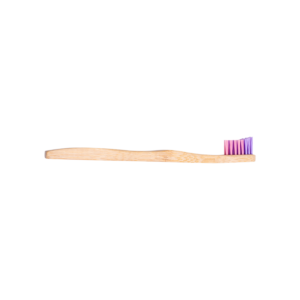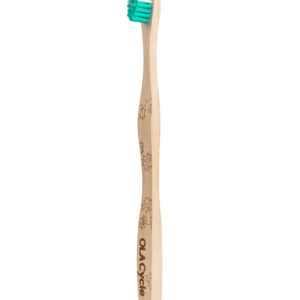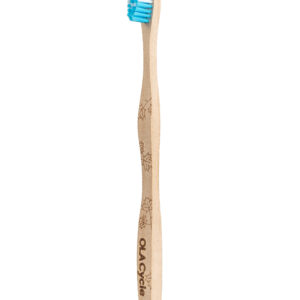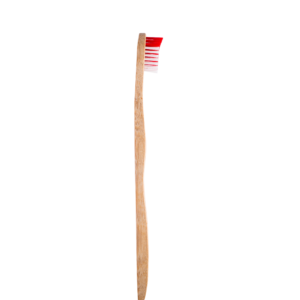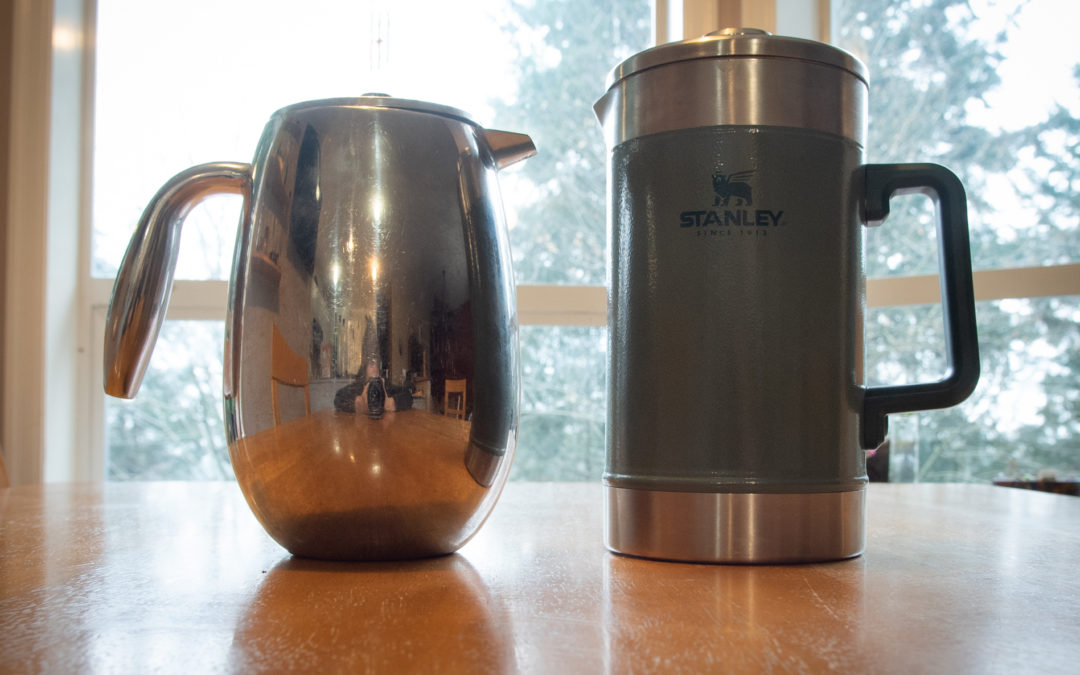
by maia836 | Feb 16, 2021 | Zilch Tips
Making coffee at home has made a comeback!
With many people staying home due to the pandemic, fewer people are buying coffee to go. I have always tried to avoid using single-use cups, as only 1% of paper cups that are produced globally are recycled. With the waxy liner on the inside of the cup, it makes it nearly impossible to recycle anyway. There are many waste-free ways to enjoy coffee at home, or even on the go.
At Home:
Making coffee at home is the most affordable, earth-friendly way to make coffee, so try to make it at home as much as possible. When making coffee, always use what you have and don’t go out and buy a new low-waste option. Depending on what you’re already using, there are many ways to adapt your current routine to make it zero-waste.
French Press: My favourite way to make coffee is with my french press. It is completely zero waste, easy to make weaker or stronger and pretty quick to make. The French presses are usually stainless steel and/or glass, making them long-lasting and easily recyclable/repurposed once they reached the end of their life.
Re-Usable Filters: If you make your coffee in a way that requires a filter, try using a reusable fabric filter. They are washable and long-lasting. Stainless steel filters are also a great alternative to paper filters. Many pour-over systems use a reusable filter and are a great way to make a single cup of coffee to ensure there is no waste, but who drinks only one cup?
Moka Pot: One of my roommates is a sucker for good coffee. She has tried many different ways to create that perfect cup, but her favourite is her traditional Italian stovetop Moka pot. It’s stainless steel and just requires some coffee grounds, water and your stovetop. It’s great for making strong espresso completely zero-waste.

K-Cups: K-Cups, in my opinion, is just bad news! From the beginning, they have been a very wasteful option for making coffee. The pods themselves are not recyclable in most places and are made up of aluminum and plastic, both known for potential carcinogens. K-Cups have produced so much trash that they could wrap around the planet more than 10 times. If you own a K-Cup machine, luckily there are alternatives to those nasty single-use pods. Today, you can find small refillable K-Cups. These are a gamechanger for those who already own a machine, and love the fast, single-cup coffees.
Buying Coffee Beans: When buying coffee for your home, consider buying your coffee in bulk. Many bulk sections in grocery stores will have coffee, and some will let you bring your own container to refill. Some local coffee shops will roast their own coffee or will use a locally roasted bean, many of these places will also have these coffees available for purchase. Important things to look for when buying coffee are Fair Trade, organic, Rainforest Alliance, and shade-grown coffee. It may be hard to find a coffee that checks all these boxes, but do your best to find the best option for you.
Coffee Afterlife: With any of these zero-waste options, you are going to have used coffee grounds. If you are tossing these grounds, be sure to compost them, rather than throw them into the trash. Alternatively, these grounds can be used for many things to give them a second life! One of my favourite ways to reuse my grounds is to use them to make a body scrub. It’s so exfoliating and moisturizing. The coffee grounds are also great for gardens and houseplants.
If you have leftover coffee, try pouring the coffee into ice cube trays and freezing them. They are great for iced coffee, without watering it down! Leftover coffee can also be used in desserts, meals and marinades. The possibilities are endless.
Coffee To-Go:
If you are out of the house and are grabbing a coffee, be prepared and have your reusable mug. With COVID, some places may not take your reusable mugs, but I find small, local cafes will fill them for me. If you forget your reusable mug and you have some time, ask for your coffee to stay. Many places don’t advertise their to-stay mugs, but many will have them if you ask. I personally will avoid a place if I know they don’t have to stay mugs, or if they will not fill my to-go mug. If enough people ask these things, it may influence cafes to rethink their options. As always, it is better to support the small, local cafes, rather than the big chains.
Changing small habits in our daily life can have a tremendous effect on the environment. With 2.25 million cups of coffee consumed daily around the world, we have to choose the most environmentally friendly options to limit the impact on our planet. Every little bit helps and being imperfectly zero waste, is better than not trying at all.
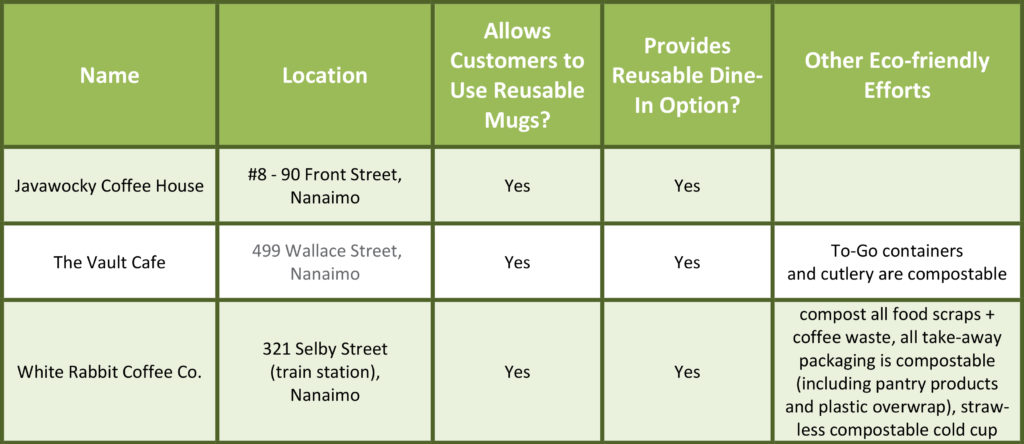
Where to get coffee around Nanaimo in your own travel mug
For more resources for living zero-waste: https://zilchboutique.com/resources/
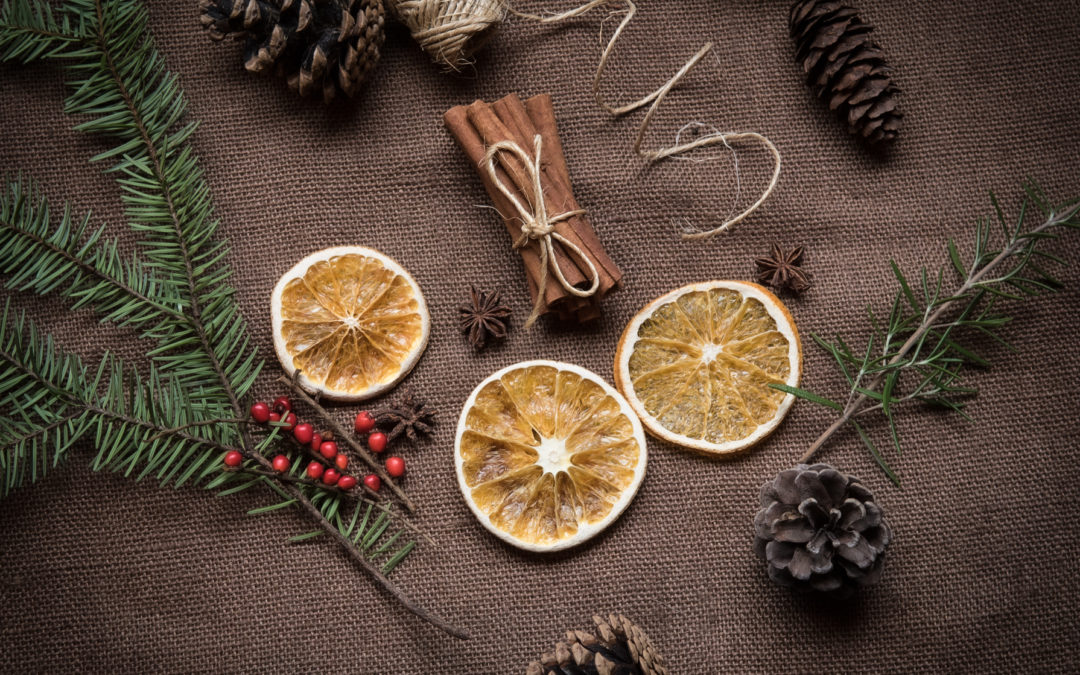
by maia836 | Dec 15, 2020 | Holidays
Christmas is one of the most wasteful time of year. From wrapping paper to ribbons, an immense amount of waste is created each year during the holidays. In the US alone, an average of 25 million tons of garbage is thrown away from Thanksgiving to New Year’s, which is an extra 25% more trash than any other time of year. Thankfully there are many beautiful and eco-friendly alternatives for wrapping up your Christmas gifts this year.
“Zero Waste Canada, a Vancouver-based advocacy group, estimates each Canadian tosses about 50 kilograms of garbage over the holidays, 25 per cent more than the rest of the year, thanks to the purchase of 3,000 tonnes of foil, 2.6 billion Christmas cards and six millions rolls of tape. Altogether, 540,000 tonnes of wrapping paper and gift bags are thrown out each year.” https://www.thestar.com/news/canada/2017/12/28/canadians-will-throw-out-540000-tonnes-of-wrapping-paper-and-gift-bags-this-christmas-season.html
Furoshiki
Furoshiki is a traditional Japanese wrapping cloth, and additionally a style of gift wrapping. It can be used to wrap gifts of any size and shape. A variety of techniques and designs are used to make every gift unique. The wrap itself can be incorporated into the gift, such as a baby blanket for a baby gift, or a tea towel for a kitchen gift. Check out these tips and techniques: https://blog.spoonflower.com/2019/11/6-ways-to-wrap-a-gift-with-furoshiki/
See the video below for instructions.
Newspaper
A recyclable, on-hand gift wrap could be newspaper. Use the comic section of the newspaper to give your gift some character and colour, or use the traditional black and white print for a clean, simple appearance. It is great for wrapping gifts last minute while travelling or to give a second life to the newspaper in the recycle bin! Other on-hand wrapping options could include magazines or old books.

tim-mossholder-H6eaxcGNQbU-unsplash
Maps
One of my favourite ways to wrap gifts is to use maps. We tend to grab maps when travelling, so we usually have a variety on hand. Maps are great for wrapping gifts for those who like to travel. You can find maps in old magazines, second-hand stores, or in National Geographic books.

andrew-neel-1-29wyvvLJA-unsplash
Paper Grocery Bags
Another great way to wrap gifts is by using paper grocery bags. Whether the paper bag is crinkled or folded, it will give your gift a little texture. If there are any markings or logos on the bags, you can turn them inside out, or cover them with decorations. This gives those paper bags a second life!

samuel-holt-IHpI0OVUzRk-unsplash
Dish Towels
Make the wrapping part of the present by using a dish towel or similar for your gift wrapping. Dish towels, pillowcases, a scarf, even a sheet for a large gift can be used instead of paper.

micheile-henderson-N_wGDmRL4hQ-unsplash
Reuse
Whenever you are given a gift and it is wrapped in wrapping paper, a gift bag, or tissue, carefully unwrap it and fold it up to be reused. Encourage your friends to do the same, as it will save money and the planet; and what’s better than those two things? A majority of wrapping paper and bags are not recyclable due to the foil and/or microplastic that are embedded in the paper. Using these to their fullest will eliminate large amounts of waste from the landfill each year.

tamanna-rumee-5n2XtbvekO8-unsplash
Ties and Embellishments
Try to keep your tape to a minimum by using a natural string or twine to wrap up your gifts. If tape is used, be sure to remove it from the paper before recycling. Decorate your wrapped gifts with branches from trees, pinecones or dried oranges for a lovely natural touch. Using sprigs of herbs or cinnamon sticks can bring an aroma to your gifts, and a holiday feeling!
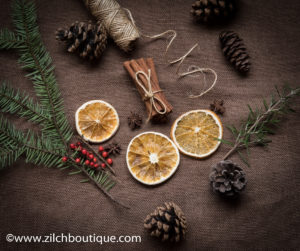
Christmas Present Adornments
How will you be wrapping your gifts this year?
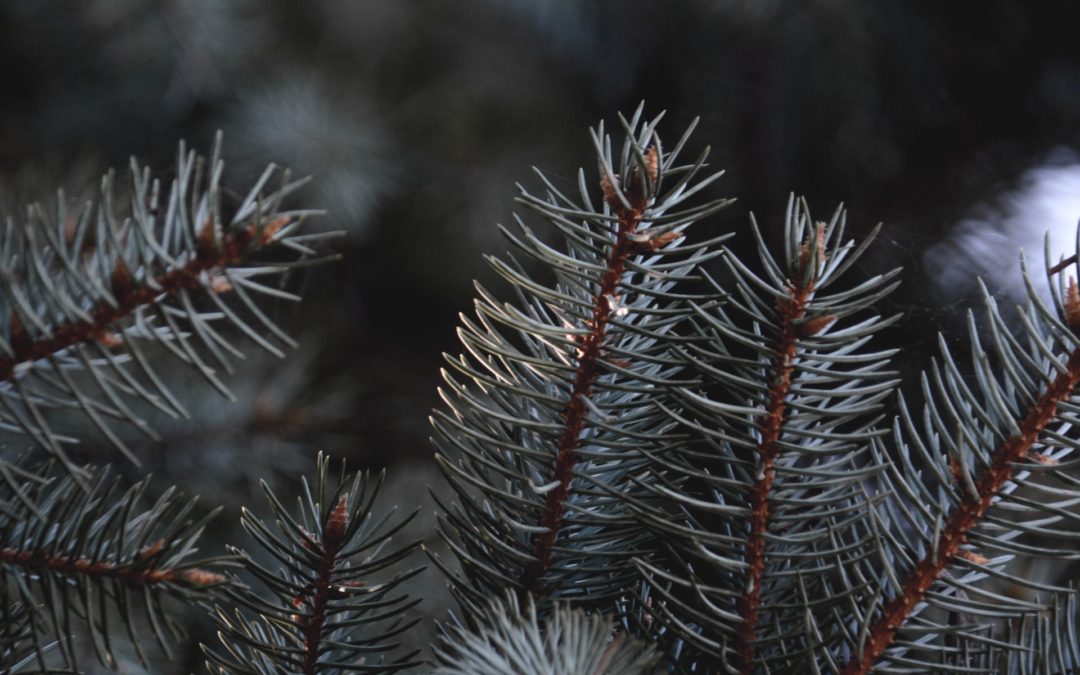
by maia836 | Dec 2, 2020 | Holidays
If you’re wanting to switch things up this year, try these Christmas tree alternatives. They are all eco-friendly, gorgeous and can easily replace a real or artificial tree.
I have covered the pros and cons of real and artificial trees in my last blog post and if those aren’t what you’re looking for this Christmas, check these out.
Potted Christmas Tree:
A potted Christmas tree gives you the feeling of a real Christmas tree, without having to chop down a tree. These trees can only withstand being inside for a few days but can be replanted outdoors in the springtime. (photo courtesy of Café Mom)
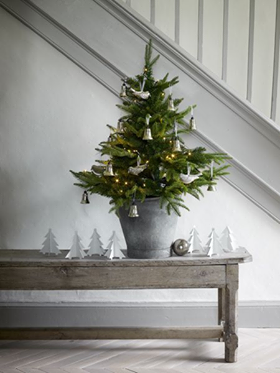
Potted Christmas Tree
Houseplants:
Alternatively, choosing a plant that will live as a houseplant will work just as well. Who says a Christmas tree can’t be a palm tree? You could even decorate a tree outdoors with eco-friendly decorations. (photo courtesy of Reddit)
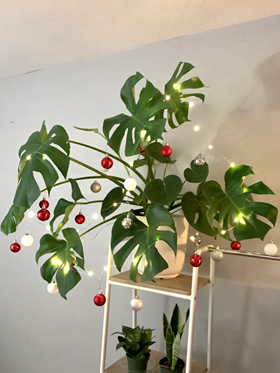
Decorated Houseplants
Driftwood Tree:
This is a great DIY for those who live near the beach. Being flat, and wall-hung, this tree is great for people with less space in their homes. Make this tree with friends or family and you will have a unique and handmade memory for years! (photo courtesy of Tiny Partments)

Driftwood Christmas Tree
Rosemary:
A potted rosemary tree makes a great counter/tabletop tree. Decorate with some lights and ornaments and you have a mini Christmas tree. Its fragrant needles can make the house smell amazing, and can also be used for holiday cooking/baking. (photo courtesy of The Greener Girl)
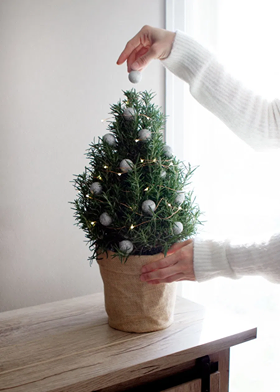
Rosemary Christmas Tree
Vase of Branches:
Collect some branches and place them in a vase for an easy, tabletop Christmas tree. Find branches with lots of little branches and hooks, so hanging lights and ornaments is easier. Using as little or as many branches as you’d like makes this a completely customizable piece! It can even be used as a centrepiece. (photo courtesy of Lonny)
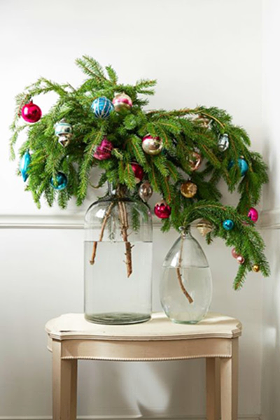
Vase of Decorative Branches
Hanging Branch:
Finding a large branch with lots of needles, hang it on the wall, and decorate with lights and ornaments. This option is great for space-saving and will give you the feeling of a real Christmas tree with the aroma and look of the branch. (Photo courtesy of Pinterest)
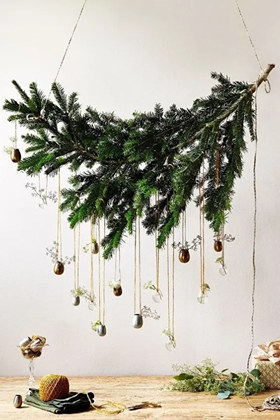
Decorated Holiday Branch
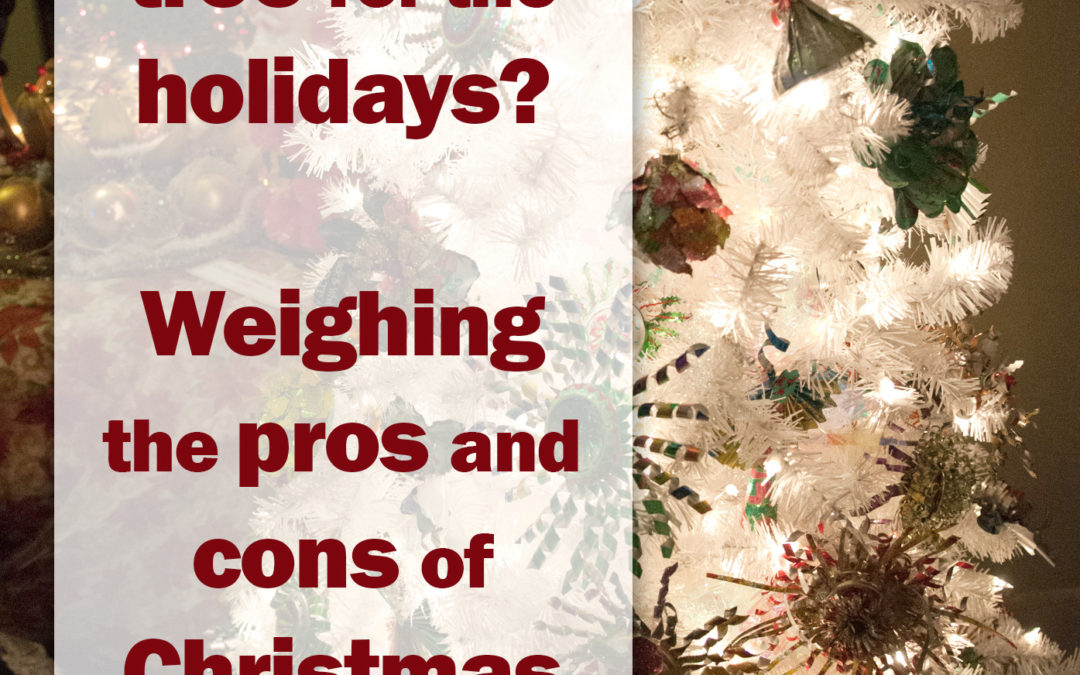
by maia836 | Nov 26, 2020 | Holidays
(Photo courtesy of CBC)
With Christmas just around the corner, many households are getting ready to decorate a tree. Whether this is an artificial tree, real tree, or some sort of alternative; there are pros and cons to each regarding sustainability. Unfortunately, neither an artificial tree nor a natural tree are a great option for the environment, but let’s take a look at pros and cons of both, and also get into some great alternatives.
Artificial trees are commonly made from PVC (polyvinyl chloride), and can take hundreds of years to break down in the landfill. Research has shown that the average artificial tree comes with a carbon footprint of around 40kg of greenhouse gas emissions. Some of the emissions come from the manufacturing of the tree itself, and some comes from the industrial emissions during the manufacturing. Additionally, the carbon footprint will go up during the transportation of the tree, as many trees are shipped from China.
Real trees are roughly half of the carbon footprint of an artificial tree. Real Christmas trees are a mono-crop system, usually grown with many herbicides and pesticides, such as glyphosate. It is unclear if these chemical residues remain on the tree by Christmas, but their effects on the environment are tremendous. The chemicals can have run-off into waterways, have a negative impact on insects and animals, and much more.
Artificial Tree
| Pros |
Cons |
| No maintenance |
Made from PVC chemicals, which gives it a large carbon footprint. |
| One-time purchase, can last years and save you money |
No scent. |
| Easy clean up, just pack up into the box. |
Requires somewhere to store each year |
| If used for many years (6-20 years), can equate to a real tree’s environmental impact |
Takes hundreds of years to break down. Nearly impossible to recycle. |
Real Tree
| Pros |
Cons |
| Fresh scent |
Only lasts one season, so it could cost more than an artificial tree over the years |
| Takes in carbon dioxide from the air, and releases oxygen. |
Requires more care and maintenance (watering) |
| No synthetic material, all-natural materials. |
The combination of the needles drying out, and the heat from the lights on the tree, could be a fire hazard. |
| A great family tradition, when cutting down a tree. |
Potential chemical residue on tree from growing practices |
| Can support local businesses and farmers in the community |
Clean up is more difficult. Many garbage collectors don’t pick up trees, so it may require a trip to the dump or wood chipper. |
If deciding to get a real Christmas tree, try to find a local, organically grown tree. Be sure there is no wildlife living in the tree, and try to get rid of any bugs before loading it onto the vehicle. Be sure to dispose of the tree in the most sustainable way. Some sustainable options are turning the tree into wood chips, donate the tree to a wildlife sanctuary, or donate to a river or stream program. Try to avoid taking the tree to the landfill, or burning the tree.
If deciding to get an artificial Christmas tree, try to find a used one if possible. If used is not an option, buy a tree that was made in your country to ensure it has a lower carbon footprint from less transportation. Be sure to keep the artificial tree for many years (10-20 years) to ensure it will offset its environmental impact. If getting rid of the tree, consider selling it, donating it, or giving it away to someone who may need or want it.
There isn’t really a definitive answer as to whether a real tree or an artificial one is better as there are many factors that come into play. There is always a worst option and a best option when making a decision. When deciding on a Christmas tree this year, take into consideration the points above, and choose what makes sense for your home and the environment. Alternatively, you could choose to ditch the traditional Christmas trees and opt for these fun, eco-friendly alternatives. (https://zilchboutique.com/sustainable-christmas-tree-alternatives/ideas coming soon)
Will you be using a real or artificial tree this year or will you be trying an alternative? Let us know in the comments below!





















